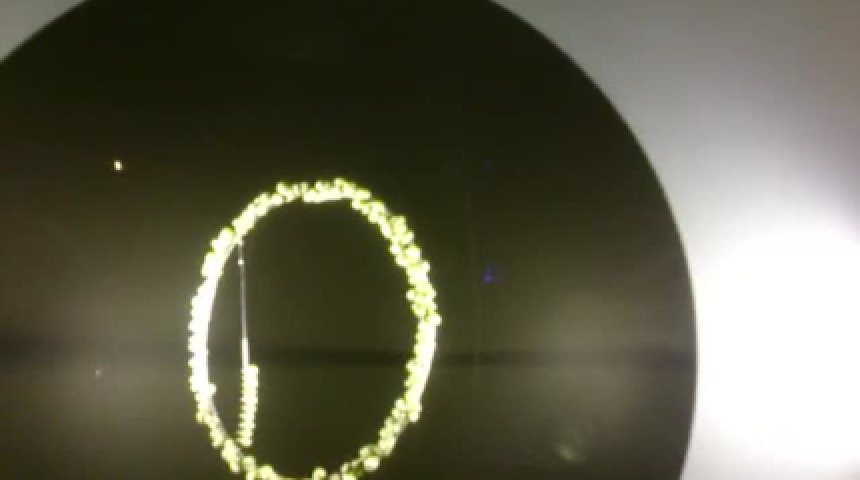發展的紅線 誰來劃?-記洛克史登教授台北演講
影/Johan Rockstrom教授在 TED 的演說
文/楊為植(國際科學理事會會長特別助理,原題:"Boundaries for Managing the Human Enterprise: An Afternoon at a Symposium")
“Humanity must begin bending the curves…” It was a grey afternoon on November 4th, 2010. 200 or so students, scholars and citizens sat in a symposium hosted by the Institute of Atomic and Molecular Sciences at the National Taiwan University (NTU) (中央研究院原子分子研究所). They were listening intently to a presentation given by Professor Johan Rockstrom – head of the Stockholm Environment Institute (SEI) and the Stockholm Resilience Center; 2009 Swedish person of the year; and one of the world’s top scientists on resilience and sustainability issues.
The experts sharing the floor with him in this symposium were no less distinguished: Professor Shaw-Chen Liu from Academia Sinica’s Research Center for Environmental Changes (中央研究院環境變遷研究中心主任劉紹臣教授);Professor Chen-Tung Arthur Chen of the Institute of Marine Geology and Chemistry at the National Sun Yat-sen University (中山大學亞太海洋中心陳鎮東教授), Professor Jiunn-Rong Yeh of the National Taiwan University College of Law (台灣大學法律系葉俊榮教授),and the Moderator, former Academia Sinica President and a Nobel Laureate in Chemistry, Professor Yuan-Tseh Lee (引言人, 前中研院院長李遠哲).
“In nature, surprise is the norm, not the exception”
A year before, Professor Rockstrom had led an eminent group of scientists who published an influential paper in the journal Nature titled “A Safe Operating Space for Humanity.” And he is now here to share their groundbreaking findings. The premise of their research was simple enough. For the past 10,000 years – the Holocene – the global climate was remarkably stable. There is scientific evidence to suggest that this equilibrium is the only state of the planet we know of that can support human development as we know it. They reasoned, therefore, that keeping the planet in this stable state would be wise. Yet, everywhere we look, humans are rapidly altering their natural surroundings.
It’s not just our emission of greenhouse gases that displays the famous “hockey-stick figure” (flat for most of history, then steep rise within the last 1-2 centuries – similar to the curve of a hockey stick). Species extinction, deforestation, land degradation, air pollution, population growth, etc… all conform to this “hockey-stick” trend. Mankind is changing the environment at a rate without historical precedent. The Nobel-winning scientist Paul Crutzen (a co-author on the paper) thus believes that we have entered the “Anthropocene” – an age where humans are now the single biggest driver of environmental change.
So what is so problematic about these man-made changes? Professor Lee says that he is often asked: “What’s the big deal about two degrees? Temperatures change much more than that from season to season, or even from morning to evening!” “But look at the human body,” replies Prof. Lee. If our body temperature rises by a mere one degree, we have a fever; if it rises by 2-3 degrees beyond that, we may die. And the Earth, like the human body, is a finely-tuned system.
Man-made change is also problematic because of what Prof. Rockstrom calls “sudden regime shifts”, or “tipping points.” Most of us think of change as linear – for instance, if we put a given amount of pollutant into the environment, we should expect a proportional increase in pollution, not much more, and not much less. Prof. Rockstrom observes, however, that “in nature, surprise is not the exception, it’s the norm.” He raises as examples the sudden collapse of coral reef systems after decades of over-fishing, tourism and climate change, and the totally unforeseen loss of 30-40% of the Arctic’s summer ice-cover in 2007 due to climate change. In these and many other systems, conditions appear to be relatively stable despite a barrage of external forces; but then, all of a sudden, the systems shift to a completely different state. (Professor Chen added: “even within the stable Holocene, there are surprises!”)
As human development places more and more pressure on natural systems, these systems become less “resilient.” Whereas before, a natural system could withstand shocks while remaining relatively stable, now even a slight “push” could tip them over abruptly and dramatically into a state that is unable to provide for human welfare. And this change may be irreversible. Prof. Rockstrom states, for example, that we have no idea how to “re-freeze” the arctic. Similarly, it is virtually impossible to restore an ecosystem once it’s been lost.
Here, not only is uncertainty not a reason to rest easy and wait until scientists are sure, it is a frightening reason for worry. We know we are changing the planet, more often than not in negative ways. And we have witnessed the wholesale collapse of natural systems after years of human influence. What we do not know is at what point these collapses may happen. If that does not seem scary, imagine that you are in a snowstorm, trying to find a way home. You know there are cliffs nearby, but you cannot see where they are.
Planetary Boundaries: a Safe Operating Space for Humanity
In the Nature paper, Prof. Rockstrom and his colleagues propose a solution to this problem of not knowing where the tipping points are: we set safe boundaries that make it unlikely we would get close to them. Prof. Rockstrom illustrates this point with a picture of a man standing at the edge of a waterfall: “You do not want to be standing where he is. In fact, it’s illegal to stand there.” A little further upstream, there are fences that keep people away from the brink. Planetary boundaries would function much like these fences, keeping humanity away from points of danger.
Taking Earth as one system, their research identifies nine “processes” that are central to the functioning of the Earth system. These are: stratospheric ozone layer; biodiversity; chemical dispersion; cl



回應文章建議規則: